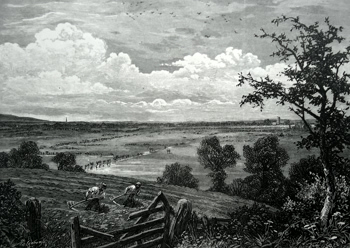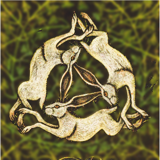
What has happened to our woodlands?
The State of the UK's Woods and Trees 2021 provides clear evidence that there is an urgent need to act now in all corners of the UK. Dutch Elm Disease led to the loss of an estimated 2 million trees in Somerset by the mid 1980’s. With ash dieback alone we stand to lose millions of ash trees, resulting in local extinctions of wildlife species which are dependent on ash.
The UK’s woodland cover has more than doubled in the last 100 years, however much of this increase comprises non-native trees. Existing native woodlands are isolated and in poor ecological condition.
We need to at least quadruple the current rate of woodland creation and increase the proportion of UK-grown native species to help tackle the effects of climate change and give nature a fighting chance of recovery.
Somerset Council’s strategy sets out a plan for planting 240 hectares of new trees and woodlands each year across the county until 2033.
Ancient and species-rich hedgerows are a now a “priority habitat” in the UK Biodiversity Action Plan (UK BAP). The main reason for hedgerow decline today is not direct removal but that they have fallen out of the traditional management cycle, which for many centuries saw hedges managed according to their inherent lifecycle. It is a feature of Sedgemoor that they are trimmed to the same height repeatedly year on year.
Links:
State of the Uk's Woods and Trees - 2021
Hedgerows in Somerset
Jim's Corner
Spring Butterflies
I have always loved the challenge of photographing Butterflies and have travelled around the county to do this. Lockdown gave me the opportunity to explore and record the amazing variety we have on our doorstep.
The first 5 Butterflies to appear in the village are those which hibernate over the winter in the adult (Imago) form, Brimstone, Peacock, Small Tortoiseshell, Red Admiral and Comma. When the temperature rises above 13oC they will start to emerge from the shelter of hedgerows, trees and outbuildings and take to the wing to find food and then a mate......
To continue reading the full, beautifully illustrated article, (click here)
Would you help save our butterflies and moths? (Click here) to discover how.

